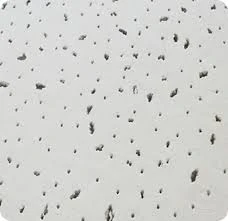- Afrikaans
- Albanian
- Amharic
- Arabic
- Armenian
- Azerbaijani
- Basque
- Belarusian
- Bengali
- Bosnian
- Bulgarian
- Catalan
- Cebuano
- Corsican
- Croatian
- Czech
- Danish
- Dutch
- English
- Esperanto
- Estonian
- French
- German
- Greek
- Hindi
- Indonesian
- irish
- Italian
- Japanese
- Korean
- Lao
- Malay
- Myanmar
- Norwegian
- Norwegian
- Polish
- Portuguese
- Romanian
- Russian
- Serbian
- Spanish
- Swedish
- Thai
- Turkish
- Ukrainian
- Uzbek
- Vietnamese
nov . 11, 2024 09:47 Back to list
ceiling grid cross tee
Understanding Ceiling Grid Cross Tees A Comprehensive Guide
When it comes to designing and constructing ceilings, many elements contribute to both the aesthetic and functional aspects of a space. One of the vital components is the ceiling grid system, particularly the cross tees. This article will delve into ceiling grid cross tees, explaining their function, types, installation process, and benefits in modern architecture.
What Are Ceiling Grid Cross Tees?
Ceiling grid cross tees are structural components used in suspended ceiling systems, which feature a grid framework that supports ceiling tiles or panels. The cross tees form a crucial part of the grid layout, positioning perpendicularly to the main tees, creating a robust framework to which the ceiling tiles are attached. This grid not only provides structural integrity but also allows for easy access to the space above the ceiling, crucial for maintenance and installations of electrical and HVAC systems.
Types of Cross Tees
Ceiling grid cross tees come in various sizes and materials, accommodating different design requirements and preferences. The most common types include
1. Standard Cross Tees Typically measuring either 2 feet or 4 feet in length, these are the most widely used and can be adjusted to fit most standard ceiling tile sizes. 2. Heavy-Duty Cross Tees Made from thicker materials, these are designed to support more weight, making them ideal for commercial spaces where larger ceiling tiles or heavier materials are used. 3. Economy Cross Tees A cost-effective option, these tees are lighter and generally used in residential or low-traffic commercial environments. 4. Specialty Cross Tees These are tailored for specific applications, such as curved ceilings or design elements that require unique shapes.
Installation Process
Installing ceiling grid cross tees is a straightforward process, though it requires careful planning and execution
1. Planning Layout Before installation, it’s essential to have a detailed design of the ceiling layout, including measurements for the main tees and cross tees, factoring in the size of the ceiling tiles. 2. Setting Up Main Tees The installation begins with the main tees, which are typically run parallel to the longest wall in the room. These must be securely fastened to the ceiling joists or structural supports.
3. Placing Cross Tees Once the main tees are in place, cross tees are inserted perpendicularly to connect the main tees at specified intervals, usually 2 feet apart for standard tiles. The ends of the cross tees fit into the slots of the main tees, creating a grid pattern.
ceiling grid cross tee

4. Securing the Grid After placement, ensure all components are level and securely attached. Additional support might be necessary in areas where heavier tiles or fixtures are installed.
5. Inserting Ceiling Tiles Finally, tiles are inserted into the formed grid, completing the suspended ceiling structure.
Benefits of Using Ceiling Grid Cross Tees
Utilizing ceiling grid cross tees in construction offers several advantages
- Versatility They can accommodate various ceiling tile designs, colors, and textures, enabling architects and designers to create customized spaces that meet specific clientele needs. - Accessibility The grid system allows for easy access to above-ceiling installations, facilitating routine maintenance and adjustments without damaging the ceiling.
- Acoustic Control Many ceiling tiles used in conjunction with grid cross tees are designed to absorb sound, helping to mitigate noise in both commercial and residential environments, contributing to a more pleasant atmosphere.
- Aesthetic Appeal The grid system provides a clean, uniform look to ceilings, adding to the overall aesthetic of interior spaces. Through strategic lighting designs incorporated within the grid, visual interest can be achieved further.
- Cost-Effectiveness Installation of suspended ceilings using cross tees can often be more economical than traditional ceiling methods due to their simpler installation process and the ability to replace individual tiles as needed.
Conclusion
Ceiling grid cross tees are integral to modern ceiling design, offering functionality, flexibility, and aesthetic enhancements. Whether in residential or commercial settings, understanding their function and installation can lead to successful ceiling projects that balance beauty and practicality. As architectural trends evolve, these essential components will continue to play a significant role in shaping the interiors of the future.
-
Transform Interiors with PVC Gypsum Ceiling: A Stylish, Durable, and Moisture-Resistant SolutionNewsMay.19,2025
-
The Smart Interior Upgrade: Discover the Durability and Versatility of Gypsum Ceiling Access Panel SolutionsNewsMay.19,2025
-
The Smart Choice for Interior Design: Discover the Value of PVC Gypsum Ceiling SolutionsNewsMay.19,2025
-
Mineral Fiber Ceiling Tiles: The Smart Blend of Performance and AestheticsNewsMay.19,2025
-
Mineral Fiber Ceiling Tiles: The Superior Choice Over Gypsum for Sound and Fire SafetyNewsMay.19,2025
-
Mineral Fiber Ceiling Tiles: Eco-Friendly Strength and Style for Every CeilingNewsMay.19,2025







